
Fram ("Forward") is a ship that was used in expeditions of the Arctic and Antarctic regions by the Norwegian explorers Fridtjof Nansen, Otto Sverdrup, Oscar Wisting, and Roald Amundsen between 1893 and 1912. It was designed and built by the Scottish-Norwegian shipwright Colin Archer for Fridtjof Nansen's 1893 Arctic expedition in which the plan was to freeze Fram into the Arctic ice sheet and float with it over the North Pole.

Grytviken is a settlement on South Georgia in the South Atlantic and formerly a whaling station and the largest settlement on the island. It is located at the head of King Edward Cove within the larger Cumberland East Bay, considered the best harbour on the island. The location's name, meaning "pot bay", was coined in 1902 by the Swedish Antarctic Expedition and documented by the surveyor Johan Gunnar Andersson, after the expedition found old English try pots used to render seal oil at the site. Settlement was re-established on 16 November 1904 by Norwegian Antarctic explorer Carl Anton Larsen on the long-used site of former whaling settlements.

The South Orkney Islands are a group of islands in the Southern Ocean, about 604 km (375 mi) north-east of the tip of the Antarctic Peninsula and 844 km (524 mi) south-west of South Georgia Island. They have a total area of about 620 km2 (240 sq mi). The islands are claimed both by Britain, and by Argentina as part of Argentine Antarctica. Under the 1959 Antarctic Treaty, sovereignty claims are held in abeyance.

New Island is one of the Falkland Islands, lying north of Beaver Island. It is 238 km (148 mi) from Stanley and is 13 km (8.1 mi) long with an average width of 750 m (820 yd). The highest point is 226 metres (741 ft). The northern and eastern coasts have high cliffs but the eastern coasts are lower lying, with rocky shores and sandy bays. There are several smaller offshore islands in the group; North Island and Saddle Island have high cliffs but Ship Island and Cliff Knob Island are lower lying.

William Speirs Bruce was a British naturalist, polar scientist and oceanographer who organized and led the Scottish National Antarctic Expedition to the South Orkney Islands and the Weddell Sea. Among other achievements, the expedition established the first permanent weather station in Antarctica. Bruce later founded the Scottish Oceanographical Laboratory in Edinburgh, but his plans for a transcontinental Antarctic march via the South Pole were abandoned because of lack of public and financial support.

Sully Island is a small tidal island of 14.5 acres (5.9 ha) by the hamlet of Swanbridge in the Vale of Glamorgan. It is located 400 m (440 yd) off the northern coast of the Bristol Channel, midway between the towns of Penarth and Barry and 10 km (6 mi) south of the Welsh capital city of Cardiff. It is part of the parish of Sully, after which it is named, and is registered as a Site of Special Scientific Interest. Sully island is one of 43 (unbridged) tidal islands that can be reached on foot from the mainland of Great Britain.

Terra Nova was a whaler and polar expedition ship. She is best known for carrying the 1910 British Antarctic Expedition, Robert Falcon Scott's last expedition.

USS Bear was a dual steam-powered and sailing ship built with six-inch (15.2 cm)-thick sides which had a long life in various cold-water and ice-filled environments. She was a forerunner of modern icebreakers and had a diverse service life. According to the United States Coast Guard official website, Bear is described as "probably the most famous ship in the history of the Coast Guard."

Carl Anton Larsen was a Norwegian-born whaler and Antarctic explorer who made important contributions to the exploration of Antarctica, the most significant being the first discovery of fossils for which he received the Back Grant from the Royal Geographical Society. In December 1893 he became the first person to ski in Antarctica on the Larsen Ice Shelf which was subsequently named after him. In 1904, Larsen re-founded a whaling settlement at Grytviken on the island of South Georgia. In 1910, after some years' residence on South Georgia, he renounced his Norwegian citizenship and took British citizenship. The Norwegian whale factory ship C.A. Larsen was named after him.

Jason was a Norwegian whaling vessel laid down in 1881 by Rødsverven in Sandefjord, Norway, the same shipyard which later built Ernest Shackleton's ship Endurance. The ship, financed by Christen Christensen, an entrepreneur from Sandefjord, was noted for his participation in an 1892-1893 Antarctic expedition led by Carl Anton Larsen.
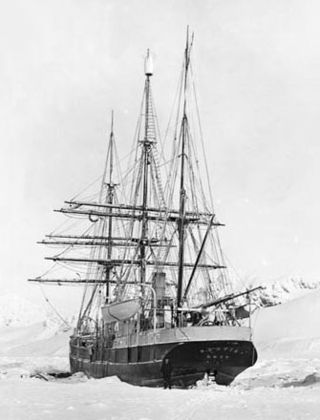
The Scottish National Antarctic Expedition (SNAE), 1902–1904, was organised and led by William Speirs Bruce, a natural scientist and former medical student from the University of Edinburgh. Although overshadowed in terms of prestige by Robert Falcon Scott's concurrent Discovery Expedition, the SNAE completed a full programme of exploration and scientific work. Its achievements included the establishment of a staffed meteorological station, the first in Antarctic territory, and the discovery of new land to the east of the Weddell Sea. Its large collection of biological and geological specimens, together with those from Bruce's earlier travels, led to the establishment of the Scottish Oceanographical Laboratory in 1906.
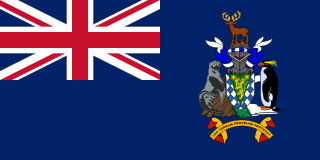
The history of South Georgia and the South Sandwich Islands is relatively recent. When European explorers discovered the islands, they were uninhabited, and their hostile climate, mountainous terrain, and remoteness made subsequent settlement difficult. Due to these conditions, human activity in the islands has largely consisted of sealing, whaling, and scientific surveys and research, interrupted by World War II and the Falklands War.

The research ship had origins in the early voyages of exploration. By the time of James Cook's Endeavour, the essentials of what today we would call a research ship are clearly apparent. In 1766, the Royal Society hired Cook to travel to the Pacific Ocean to observe and record the transit of Venus across the Sun. The Endeavour was a sturdy boat, well designed and equipped for the ordeals she would face, and fitted out with facilities for her research personnel, Joseph Banks. And, as is common with contemporary research vessels, Endeavour carried out more than one kind of research, including comprehensive hydrographic survey work.
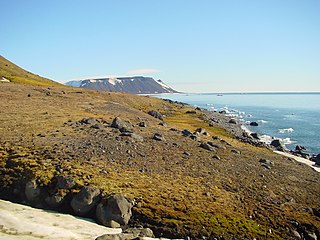
Northbrook Island is an island located in the southern edge of the Franz Josef Archipelago, Russia. Its highest point is 344 m above sea level.
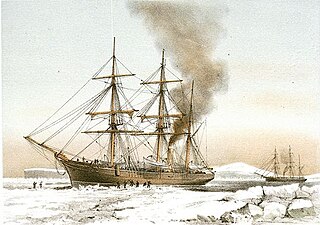
HMS Discovery was a wood-hulled screw expedition ship, and later storeship, formerly the sealing ship Bloodhound built in 1873 in Dundee. She was purchased in 1874 for the British Arctic Expedition of 1875–1876 and later served as a store ship. Discovery was sold in 1902, reverting to the name Bloodhound and her previous sealing trade. The ship was wrecked in Newfoundland in 1917.
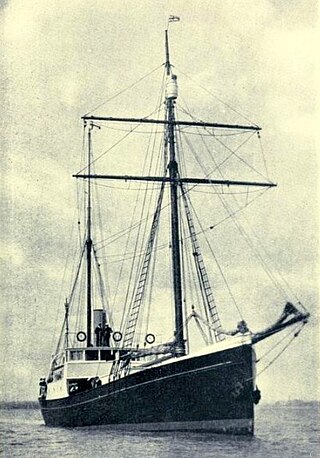
Quest, a low-powered, schooner-rigged steamship that sailed from 1917 until sinking in 1962, is best known as the polar exploration vessel of the Shackleton–Rowett Expedition of 1921–1922. It was aboard this vessel that Sir Ernest Shackleton died on 5 January 1922 while the vessel was in harbour in South Georgia. Prior to and after the Shackleton-Rowett Expedition, Quest operated in commercial service as a seal-hunting vessel or sealer. Quest was also the primary expedition vessel of the British Arctic Air Route Expedition to the east coast of the island of Greenland in 1930–1931.

Antarctic was a Swedish steamship built in Drammen, Norway, in 1871. She was used on several research expeditions to the Arctic region and to Antarctica from 1898 to 1903. In 1895 the first confirmed landing on the mainland of Antarctica was made from this ship.
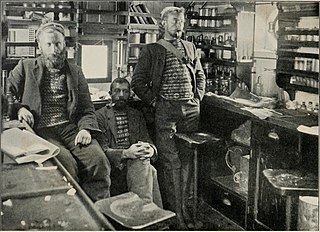
Dr James Hunter Harvey Pirie FRSE FRCPE was a 20th-century British medical doctor, philatelist, orchid-grower and bacteriologist. Pirie named the bacterial genus Listeria in honor of Joseph Lister and the Pirie Peninsula is named after him. Cape Mabel was named after his wife. In authorship he is known as J. H. H. Pirie.

The first evidence for whaling in Scotland is from Bronze Age settlements where whalebones were used for constructing and decorating dwelling places. Commercial whaling started in the Middle Ages, and by the 1750s most Scottish ports were whaling, with the Edinburgh Whale-Fishing Company being founded in 1749. The last company still engaged in whaling was Christian Salvesen, which exited the industry in 1963.



















